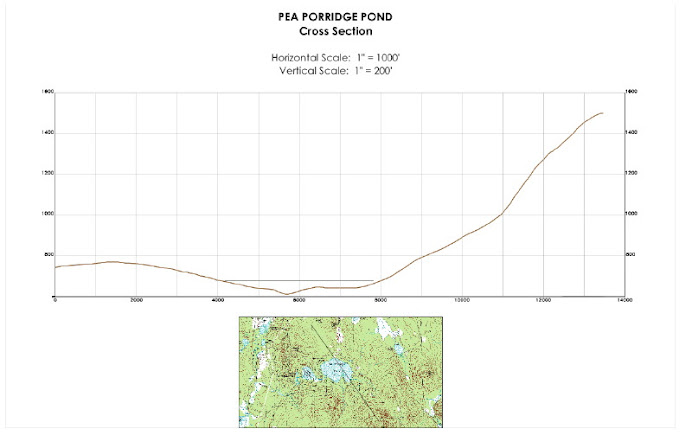PROJECT SCHEDULE CHANGE!!
Because of unworkable snow and slush conditions on the Pond's surface (see Scientific Information Posting No. 3 below by Lee Pollock), the project's schedule is being changed so that the drilling and sampling will now take place before any GPR work is completed.
What this means is that the GPR survey work originally scheduled for Saturday, February 23rd, has been cancelled. This work will be rescheduled for sometime next Spring or Summer, when it will be done over the Pond's water surface from boats and/or canoes and when a wider array of antennae can be employed that will likely generate better results. Right now, there is simply no piece of plowing equipment available that is both light enough to use out on the ice and yet, at the same time, powerful enough to remove the +/- 3 feet of heavy "overburden" slush and snow from the GPR survey traverses to complete them satisfactorily. Much consultation yesterday tried to find a technical solution to this problem, but none is available for use under present conditions that would not seriously compromise the quality and subsequent utility of the GPR data obtained. So consequently, we've cancelled the work scheduled for Saturday, 2/23.
However, this change does not condemn the project! While it is generally considered better to locate drill holes like those we propose from GPR surveying, many such holes are completed before GPR work is done. We propose to do just that, sometime early next month. We are reasonably certain we can come close to the deepest spot in the Pond, using data obtained from Dennis Deschene (see Sci. Posting No. 2). We intend to use the GPR work next Spring to confirm this location and to establish the more specific nature of the bottom sediments immediately nearby and in the vicinity between our drill hole and the curious shoal (shallow)area to the northwest.
At this point, all that remains to be done is to schedule the actual date(s) on which the drilling and sampling will take place. You will be advised of this schedule here on the blog as soon as its date(s) is definately established. Please also note that the social gathering originally planned for 2/23 will also be rescheduled to coincide with the new date(s), so keep an eye out for a revised Social Posting sometime very soon.



3 comments:
Brian - Have you thought of using a Sonar/Fish Finder (in the absence of GPR) to help confirm the deepest point - particularly if you think you are already fairly close. The Garmin unit on my boat has a cone angle of up to 45deg which would give you a pretty good area of coverage of the bottom by lowering the transducer through a hole in the ice. I'm not sure how it would work under the ice and whether reflections off the underside of the ice would confuse the sonar, but it would be pretty easy (and inexpensive) to try it out. ... Bob
Ah ha! While Dennis' info has got us in the right vicinity, we may have an even better way to pin-point the deep spot location. Turns out that the volunteers who sample for water quality in the VLAP program use the deep spot as one of their standard sampling sites. We are contacting those folks to determine the coordinates they use....Lee
PS If you aren't familiar with it, the VLAP sampling has been going on at both Big and Middle PPP since 1995. There is a load of valuable data and analysis available for both ponds at the VLAP site: www.des.state.nh.us/WMB/vlap
Interesting VLAP web site. I'll add as a link to the Blog.
Post a Comment